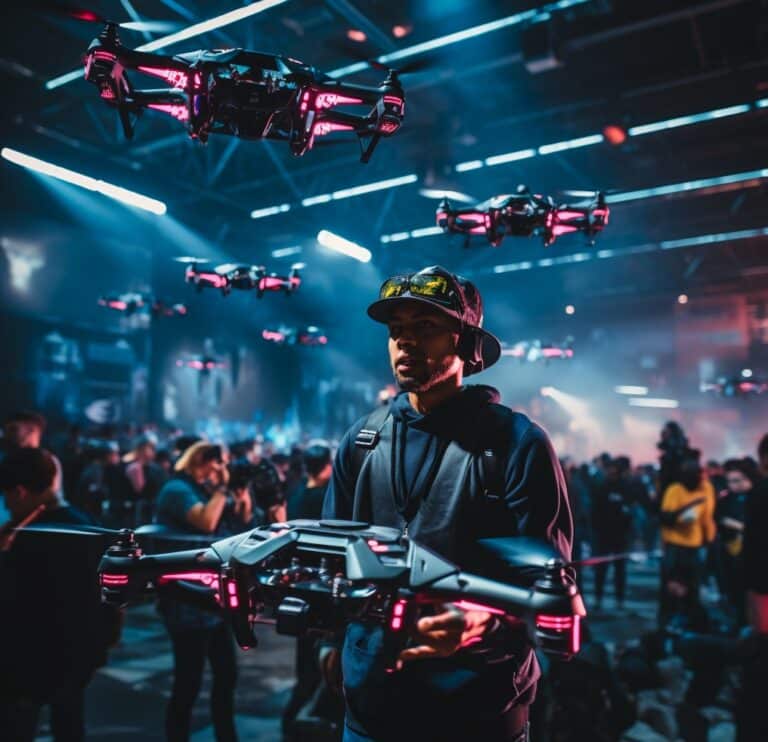AI Triumphs Over Man: The Drone Racing Revolution
Rapid advancements in technology are increasingly blurring the lines between man and machine. A case in point? AI’s recent victory in the thrilling sport of drone racing, a realm that was once dominated by humans.
The Thrill of Drone Racing
As described by Thomas Bitmatta, a seasoned drone racer, imagine the sport as a fusion of car racing and the Red Bull Air Race. It’s where the realm of three-dimensional tracks meets high-octane racing. But there’s a catch. Drones race at a staggering speed, sometimes hitting more than 200 kilometers per hour in mere seconds. Picture this:
“Agile quadcopters, flying through intricate 3D tracks, steered remotely by pilots relying on live video feed streaming straight into their goggles.”
Humans vs. Machines: The Great Divide
The physical limitations of human reflexes have always made drone racing an enticing challenge for AI. As Elia Kaufmann puts it, the sport is a testament to human spatial awareness, training, and lightning-quick decision-making. Yet, the realm of deep reinforcement learning, so potent in simulations, has found it daunting to compete with humans in this real-world setting.

Historically?
AI trained drones have lagged behind human performance, constrained by the intricacies of understanding dynamic environments, and calculating optimal racing paths.
Introducing ‘Swift’: The Game Changer
Enter Swift – the latest and most advanced AI drone racer. Unlike its predecessors, Swift doesn’t rely on cumbersome external motion capture systems. Instead, its prowess lies in on-board video, inertia sensors, and computation.
So, how does Swift prepare for a race?
By running simulations to determine the quickest route through each gate, amounting to an equivalent of 23 days of non-stop AI piloting, as revealed by Kaufmann.
However, simulations are just the beginning. The unpredictable challenges of the real world – think air turbulence, sudden illumination changes, or motion blur – mean Swift has to continuously adapt. It does so by leveraging visual inertial odometry (VIO), and a neural network, fine-tuning its understanding of its position and path.
The Result?
Swift can challenge, and sometimes surpass, the skills of the best human pilots.
Yet, like any athlete, Swift isn’t without its weaknesses. It’s not trained to recover from collisions, and environmental changes post-test laps can still befuddle its AI logic.
Beyond The Race: The Future of Swift
Though it marks a monumental achievement, Swift’s prowess isn’t just about winning races. Kaufmann envisions broader applications. He sees the potential of such AI-driven drones in speeding up search and rescue missions or building inspections, given drones’ limited battery life.
Conclusion: A New Dawn in Competitive Sports?
This AI breakthrough in drone racing isn’t just about a sport. It’s about the infinite possibilities that arise when man and machine collaborate. It heralds a future where technology doesn’t replace humans but elevates their potential.
However, one must ponder:
“Is this the pinnacle of AI in competitive sports, or is it just the tip of the iceberg? As the lines between human skills and machine learning continue to blur, what other realms will AI conquer next?”
